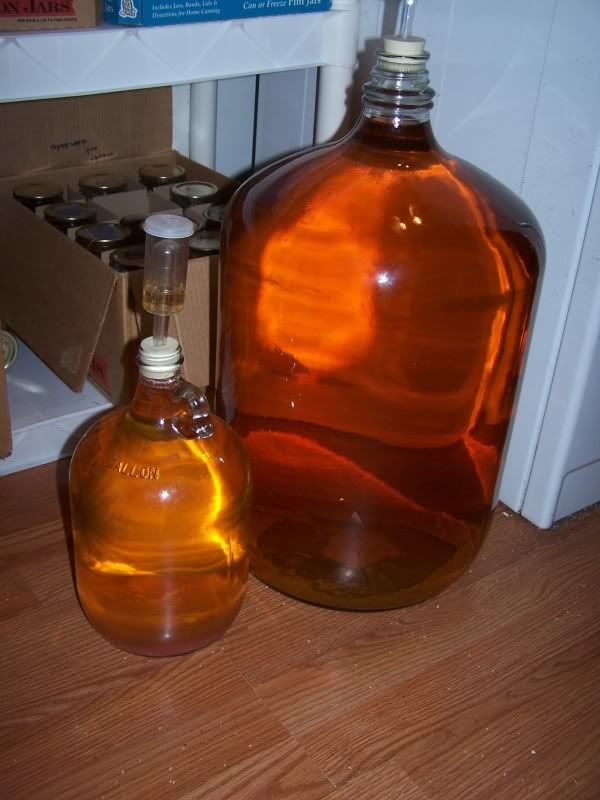
 2
2




 2
2





 . you can bottle it anytime after it clears but there is no hurry and a bit longer is better. For me at my home temps about 6-8 weeks is ideal but I have successfully bottled at 4. but I'm a lush and will drink anything
. you can bottle it anytime after it clears but there is no hurry and a bit longer is better. For me at my home temps about 6-8 weeks is ideal but I have successfully bottled at 4. but I'm a lush and will drink anything  .
.
[img]http://i109.photobucket.com/albums/n52/havlik1/permie%20pics2/permiepotrait3pdd.jpg[/img]
"One cannot help an involuntary process. The point is not to disturb it. - Dr. Michel Odent




find religion! church
kiva! hyvä! iloinen! pikkumaatila
get stung! beehives
be hospitable! host-a-hive
be antisocial! facespace




"the qualities of these bacteria, like the heat of the sun, electricity, or the qualities of metals, are part of the storehouse of knowledge of all men. They are manifestations of the laws of nature, free to all men and reserved exclusively to none." SCOTUS, Funk Bros. Seed Co. v. Kale Inoculant Co.









And, not to nit pick over details, but I thought that depriving the yeast colony of air slowed down their growth so that they didn't over populate too quickly and start to die off. That's when acetobacters have a chance to take hold, and it's their waste that gives the vinegary acid flavors.
find religion! church
kiva! hyvä! iloinen! pikkumaatila
get stung! beehives
be hospitable! host-a-hive
be antisocial! facespace
 1
1

















Apple seeds contain small amounts of cyanide
find religion! church
kiva! hyvä! iloinen! pikkumaatila
get stung! beehives
be hospitable! host-a-hive
be antisocial! facespace









But cyanide is one of those toxins that accumulates, right?
find religion! church
kiva! hyvä! iloinen! pikkumaatila
get stung! beehives
be hospitable! host-a-hive
be antisocial! facespace






 1
1




find religion! church
kiva! hyvä! iloinen! pikkumaatila
get stung! beehives
be hospitable! host-a-hive
be antisocial! facespace
 1
1













I've read bitter apples actually make better cider than the ones you want to eat. What are the apples you get from your neighbor like, tel?
I understand adding sugar (honey sounds awesome) to the apple peel/core brew
but do you really need to add extra sugar to straight apple juice?
find religion! church
kiva! hyvä! iloinen! pikkumaatila
get stung! beehives
be hospitable! host-a-hive
be antisocial! facespace








"the qualities of these bacteria, like the heat of the sun, electricity, or the qualities of metals, are part of the storehouse of knowledge of all men. They are manifestations of the laws of nature, free to all men and reserved exclusively to none." SCOTUS, Funk Bros. Seed Co. v. Kale Inoculant Co.





Do you have a picture of the one you use at work? Would the typical cages I've seen made of wooden slates and metal bands do the job?

 slightly better view of the racks.
slightly better view of the racks. better view of the cloths and racks during press.
better view of the cloths and racks during press.
find religion! church
kiva! hyvä! iloinen! pikkumaatila
get stung! beehives
be hospitable! host-a-hive
be antisocial! facespace
 1
1









tel jetson wrote:
Apple seeds contain small amounts of cyanide
they're also delicious. taste like almonds. my roommate said his dad's college roommate ate a cup of pips all at once and dropped dead. could be apocryphal.
 2
2




 2
2




Visit Redhawk's soil series: https://permies.com/wiki/redhawk-soil
How permies.com works: https://permies.com/wiki/34193/permies-works-links-threads
 4
4





|
If you look closely at this tiny ad, you will see five bicycles and a naked woman:
Rocket Mass Heater Resources Wiki
https://permies.com/w/rmh-resources
|









